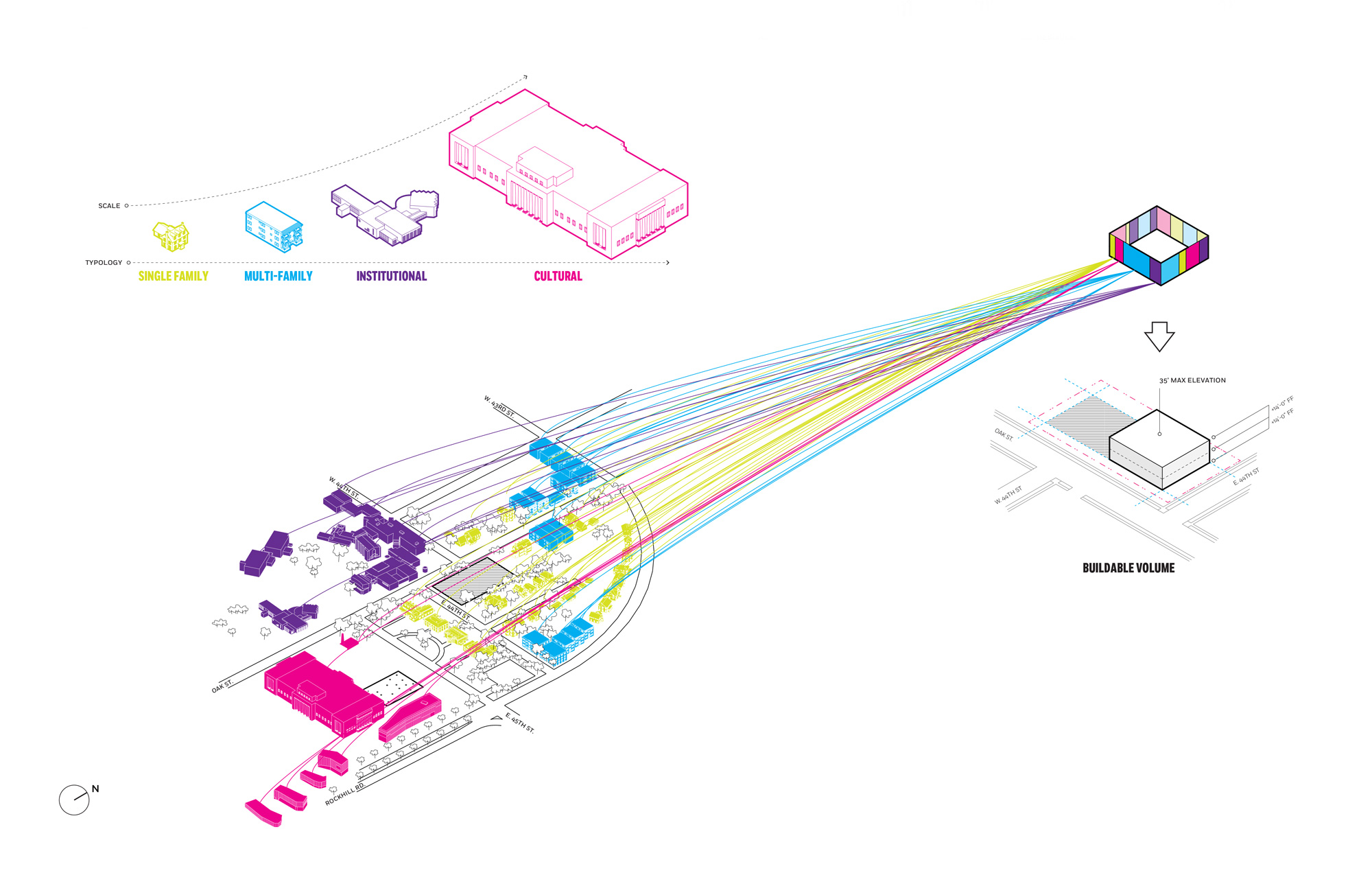Recent Project
Kansas City Art Institute _ 2020
Block p(ART)y
Envisioned as a place that will redefine the student experience, Paul and Linda DeBruce Hall on the Kansas City Art Institute campus is home to multiple academic programs and student services. As the hub for liberal arts and art history classes students are required to take, it is one of the few buildings on campus that every student visits during their time at KCAI.
The 15-acre KCAI campus is nestled in the Southmoreland Historic Neighborhood, adjacent to the historic Rockhill Neighborhood, and flanked by the city’s most prominent art museums – the Nelson-Atkins Museum of Art, and the Kemper Museum of Contemporary Art. Because of its particularly-visible location, Paul and Linda DeBruce Hall equally interfaces with the campus community, neighboring residents and nearby cultural institutions. We conducted extensive research to not only consider the histories impacting the hall’s site and purpose, but to also understand the specific typologies, materiality and landscape that will surround the building.
In repeatedly walking the site and historic neighborhoods, our team identified multiple existing elements that informed the design concept. One prominent element that differentiates the Southmoreland and Rockhill neighborhoods from others in Kansas City is the use of limestone landscape walls. That unifying concept was carried through to the site, and a similar wall was designed to frame the site and speak to neighboring communities.
While the Nelson and Kemper are large-scale institutions, the new hall is scaled to fit appropriately with the Southmoreland and Rockhill communities. Our team took queues from both brick and stone being used jointly on adjacent sites and integrated these materials to further blend the Center with its local context. The neighborhoods’ use of curved brick and stone is an influential design move in the form of the building, as well.
The interior hinges around a public atrium that connects the building’s various activities and user groups. Classrooms and administrative operations are placed around the interior perimeter of the building to connect students and staff with the exterior landscape and context. Developed from the idea of classrooms in a garden, a courtyard garden will be a place of relaxation and inspiration, complementing the interior work and focus spaces.

